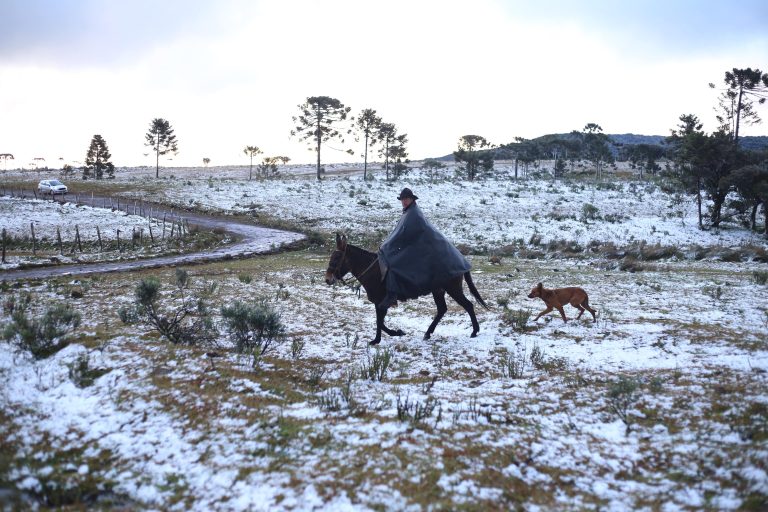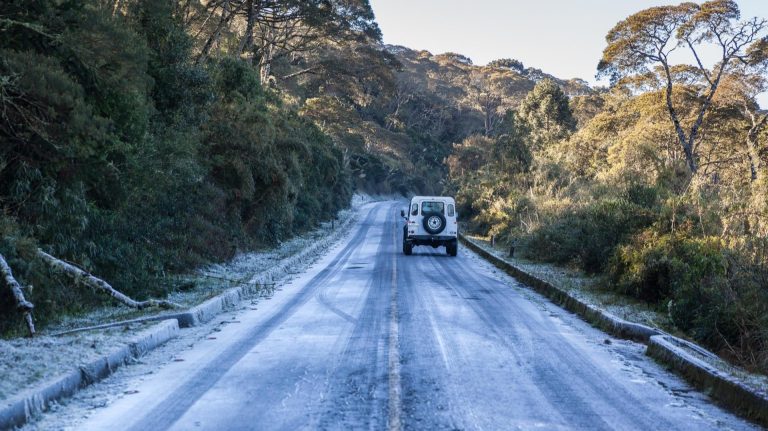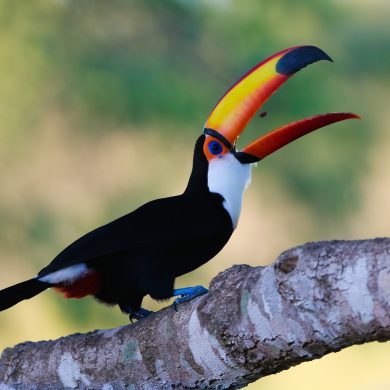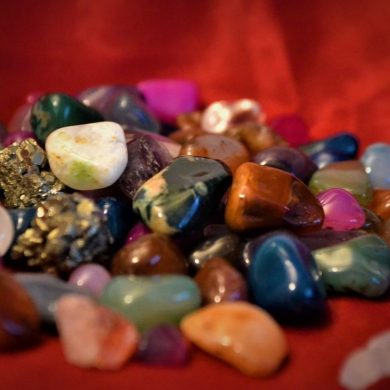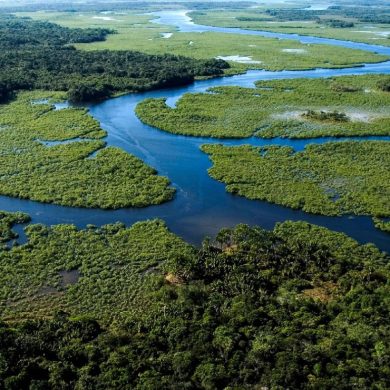In a country known for its sunshine, many people wonder, does it snow in Brazil? The answer is yes! Although a relatively rare occurrence, snow does fall in the south, where the weather is colder and the topography is more mountainous. In fact, in some parts of Brazil, snow is an annual event. Far away from the sunny beaches of Nordeste and the humid expanses of the Amazon rainforest in the north, the south of Brazil is home to elevated plains where, if you visit at the right time, you could indeed see snow.
Where Does It Snow in Brazil?
Snow in Brazil falls mostly on the high plains of the country’s southern region. The states of Rio Grande do Sul, Paraná, and Santa Catarina comprise this southern region. Brazil, a continent-sized nation stretching 4,378 kilometers (2,720 miles) from north to south, encompasses various climates including equatorial (Amapá and Pará), semi-arid (Rio Grande do Norte, Paraíba), and high-altitude tropical (São Paulo, Minas Gerais). The sub-tropical zones in the south fall just outside the tropical climate zone. Combined with relatively high altitudes, this allows for snowfall in Brazil. On a map of Brazil, look south of the Tropic of Capricorn and further inland; this is the area where you are most likely to find snowfall.
Where does the most snow fall in Brazil?
São Joaquim is the city with the most snow days in Brazil. Snow is even a source of income for the area, with an average influx of 13,000 tourists per year coming to enjoy the cold. The most snow ever recorded in Brazil fell on August 7, 1879, in Vacaria, Rio Grande do Sul, with more than 2 meters of snow recorded. Another notable snowfall occurred on June 15, 1985, at Pico das Agulhas Negras, located in the Itatiaia National Park between the states of Rio de Janeiro and Minas Gerais. Pico das Agulhas Negras is the fifth-highest mountain in Brazil.
Past Occurrences of Snow in Brazil
Snowfall in Brazil is primarily concentrated in the southern highlands, but there have been several significant snow events over the years. One of the most memorable snowfalls happened in August 1957 in São Joaquim, Santa Catarina. The blizzard left a substantial amount of snow, covering the city and its surrounding areas, making it a historic weather event that is still talked about today. In July 1968, a major snowstorm hit the state of Rio Grande do Sul, particularly affecting the cities of Canela and Gramado. The heavy snow disrupted daily life but also created a picturesque winter scene that attracted many visitors. Curitiba, the capital of Paraná, experienced a rare snowfall in July 1981. While the snow did not accumulate significantly, the event was notable for occurring in a city that does not regularly see snow. In July 2013, a cold wave brought snow to more than 140 cities across Rio Grande do Sul, Santa Catarina, and Paraná. This widespread event was one of the most significant in recent history, with snow accumulation reaching up to 20 centimeters in some areas. These historical snow events highlight that while snow in Brazil is infrequent, it can be quite dramatic and impactful when it does occur.
The Impact of Climate Change on Snowfall in Brazil
Climate change is affecting weather patterns worldwide, and Brazil is no exception. The southern regions, where snow is most common, are experiencing shifts in climate that could impact snowfall frequency and intensity. Global warming is leading to higher average temperatures, which could result in warmer winters in Brazil’s southern highlands. This warming trend might reduce the frequency of snowfall events, making them even rarer than they currently are. Climate change is also expected to alter precipitation patterns. Some models suggest that southern Brazil could see changes in rainfall distribution, which might affect snowfall. If winter precipitation decreases or shifts to other seasons, snowfall could become less common. While overall snowfall may decrease, climate change could also lead to more extreme weather events. This means that when snow does fall, it could be in the form of intense blizzards or snowstorms, rather than light, consistent snowfall. Changes in snowfall patterns could have significant impacts on local ecosystems that rely on cold weather and snow. Additionally, tourism in places like São Joaquim, which benefits from snow-related activities, could be affected. A decline in snowfall could reduce the number of tourists visiting for snow experiences. To address these changes, regions that experience snow might need to implement adaptations to their tourism industry. This could include developing new attractions that are not dependent on snow.
Snow in Unexpected Places
While snow in Brazil is more common in areas of higher elevation, there have been instances of snowfall in lower altitude areas as well. Porto Alegre, a city just 10 meters above sea level, has experienced snow. Some of the coldest cities in Brazil, which often experience snowfall, include Bom Jesus, Bom Jardim da Serra, Palmas, and Urupema. Urupema, in particular, holds the title for the lowest average annual temperatures in Brazil. Residents of Urupema commonly experience winter temperatures as low as 14°F (-10°C), and snowfall is a regular occurrence.
Winter Activities in Southern Brazil
Snow in southern Brazil opens up a range of winter activities that might surprise many visitors. In cities like São Joaquim and Gramado, winter festivals celebrate the colder season with various cultural and outdoor activities. These festivals often include ice skating, snowman-building contests, and local cuisine that highlights warm, hearty dishes perfect for the
colder weather. In the highlands, visitors can enjoy scenic drives through snow-covered landscapes, stopping at viewpoints and small towns to experience the local charm. The vineyards in the region also offer a unique experience during the winter months, with some wineries providing cozy tasting rooms and seasonal events that allow visitors to enjoy the local wines in a wintery setting. For those interested in adventure, the southern highlands offer opportunities for winter hiking and exploring nature trails that are transformed by the snow. While these activities require proper gear and preparation, they provide a unique way to experience Brazil’s natural beauty in a different season.
Local Perceptions and Adaptations
The occurrence of snow in Brazil, though rare, has a significant impact on local perceptions and adaptations. For many Brazilians, snow is a novelty and a cause for excitement, leading to increased local tourism during snowy periods. Businesses and municipalities in regions that experience snow have adapted by promoting winter tourism and developing infrastructure to support visitors, such as heated accommodations and winter sports facilities. The fascination with snow has also influenced local culture and traditions. In places like Gramado, the German-influenced architecture and winter-themed festivals create an almost European winter experience, attracting visitors looking for a taste of the snow within Brazil. These cultural adaptations highlight how communities have embraced their unique climate to create memorable experiences for both locals and tourists.
So, does it snow in Brazil? Yes, it does! Although you will have to travel to the south at the right time of year, it is indeed possible to build a snowman in the land of sun and samba. The next time you travel to the south of Brazil, plan your visit during winter, and you might just find yourself swapping sandals and sunglasses for hats and gloves. Whether you’re exploring the snowy landscapes of São Joaquim, marveling at the historic snowfall records of Vacaria, or enjoying the chilly beauty of Urupema, Brazil’s southern region offers a surprising winter wonderland. As climate change continues to impact weather patterns globally, the future of snow in Brazil may be uncertain. However, the southern region’s unique combination of high altitude and cooler temperatures will likely continue to produce occasional snowfall. Embracing these rare moments allows for a diverse and rich experience of Brazil’s varied climates, proving that even in a country renowned for its warmth, winter magic can still be found. With its mix of natural beauty, cultural richness, and seasonal surprises, southern Brazil provides an unexpected but delightful winter destination. Whether you’re a local or a tourist, the sight of snow in Brazil is a reminder of the country’s diverse landscapes and the ever-changing nature of our planet’s climate. So pack your winter gear and head south—Brazil’s snowy highlands are waiting to be explored.

